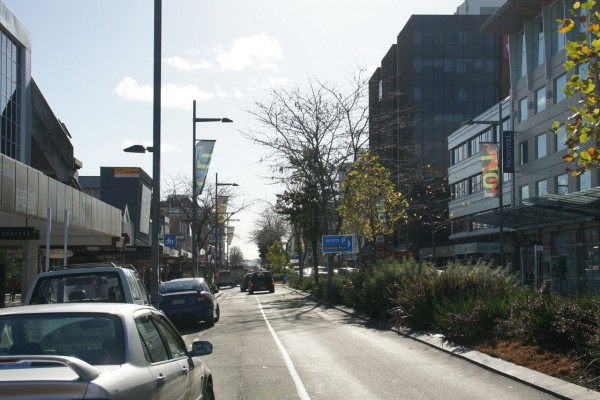Fonterra Gives Rail Freight Big Tick
Inland freight ‘hubs’ will result in greater use of rail and lead to significant fuel savings and benefits for the nation’s environment.
That is the conclusion in a report presented to the Waikato Regional Transport Committee.
And Fonterra says it agrees.
Waikato Regional Council partnered with the Energy Efficiency and Conservation Authority (EECA) to fund a study of Fonterra’s Crawford Street dairy freight hub in Hamilton.
Since 2005, Fonterra has centralised its storage and packing for its Waikato plants, allowing the dairy giant to reduce truck movements and increase its use of rail to account for 75 per cent of its transport.
The study made comparisons with the freight and logistics arrangements in place prior to the development of the inland port at Te Rapa, and data provided by Fonterra for 2010.
The study’s author, Dr Murray King, told the committee the changes resulted in a total fuel consumption reduction of 499,000 litres a year in the Waikato.
When taking into account the fuel savings from Northland and Bay of Plenty dairy plants as a result of Crawford Street’s establishment, the reduction rose to 751,000 litres per annum.
Fuel savings of this amount, said Dr King, equated to a cut of 1988.5 tonnes in carbon dioxide emissions.
Fonterra Trade and Operations managing director Gary Romano said he welcomed the report and agreed with its conclusions. “This is consistent with our own internal estimates of reduction in truck movements following the establishment of Crawford St. “In addition, there are additional savings generated by consolidating multiple stores with older, less efficient refrigeration equipment into a single, new facility at Te Rapa.”
Mr Romano said the strategy of moving more of Fonterra’s product by rail was more sustainable, not just economically for the company and shareholders but also for the environment.
“We’re also attracted by the introduction of more energy efficient locomotives, further reducing the environmental impact of freight movement,” Mr Romano said.
Committee chairman Norm Barker said the findings of this study supported the direction of the Regional Land Transport Strategy, which is promoting more energy efficient transport systems and networks in the Waikato.
“Through the development of this distribution centre, Fonterra has shifted its freight movements from the road to rail and as a result there have been real sustainability benefits for the country through substantial fuel and emissions savings. And it’s likely there will be even more savings as the new locomotives being built overseas come on line.
“This project has also demonstrated the clear energy efficiency and cost-saving benefits that can be achieved for a business too,” Cr Barker said.
The study also found that, through the move to rail, truck-kilometres from the Waikato had fallen by 53 per cent since 2005, giving safety, pollution, congestion, road maintenance and amenity benefits to residents and other road users.
Elizabeth Yeaman, Transport Partnerships manager at EECA, said: “It’s great to see that having a fundamental look at how companies transport their products can really pay off in fuel savings.”
Read the report












3 Comments
Such a huge contrast between Waikato Regional Council, and the likes of Gisborne’s council, who have no active policy on rail whatsoever, and essentially see it as a threat to local interests (like the port).
This will upset Stephen Joyce and Nationals trucking lobby groups, who receive massive donations from the government. As they are trying to increase the number of trucks on our roads hence why they are so desperate to build the Waikato expressway. Idiots.
National don’t care about making our roads safer they only care about encouraging growth for growth sakes not managing what we have.
BD - totally agree with you there! Very good points indeed.